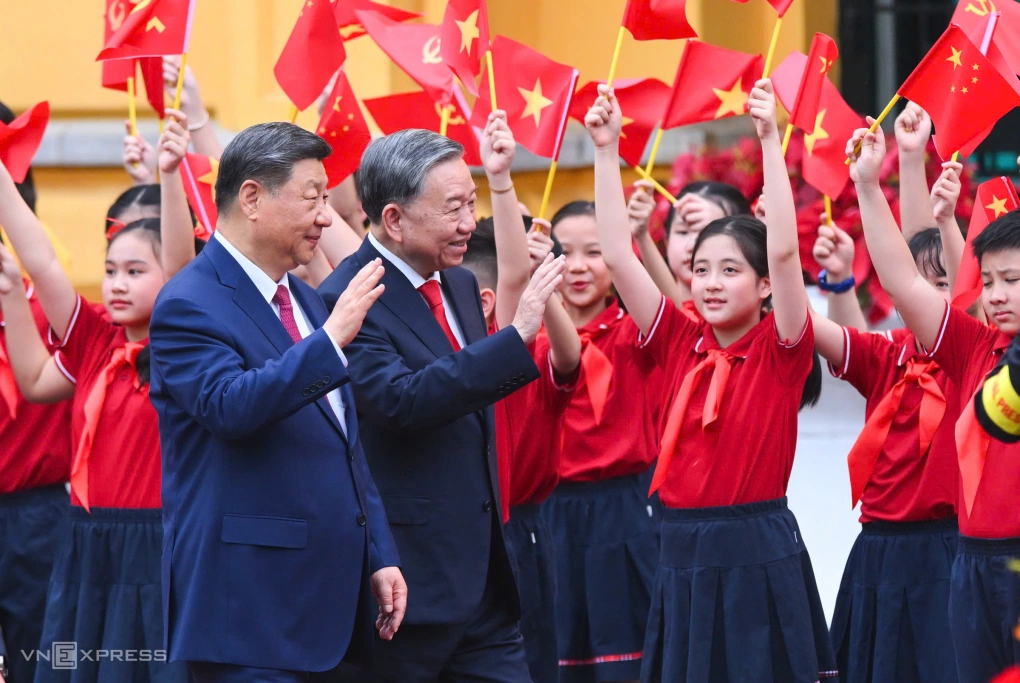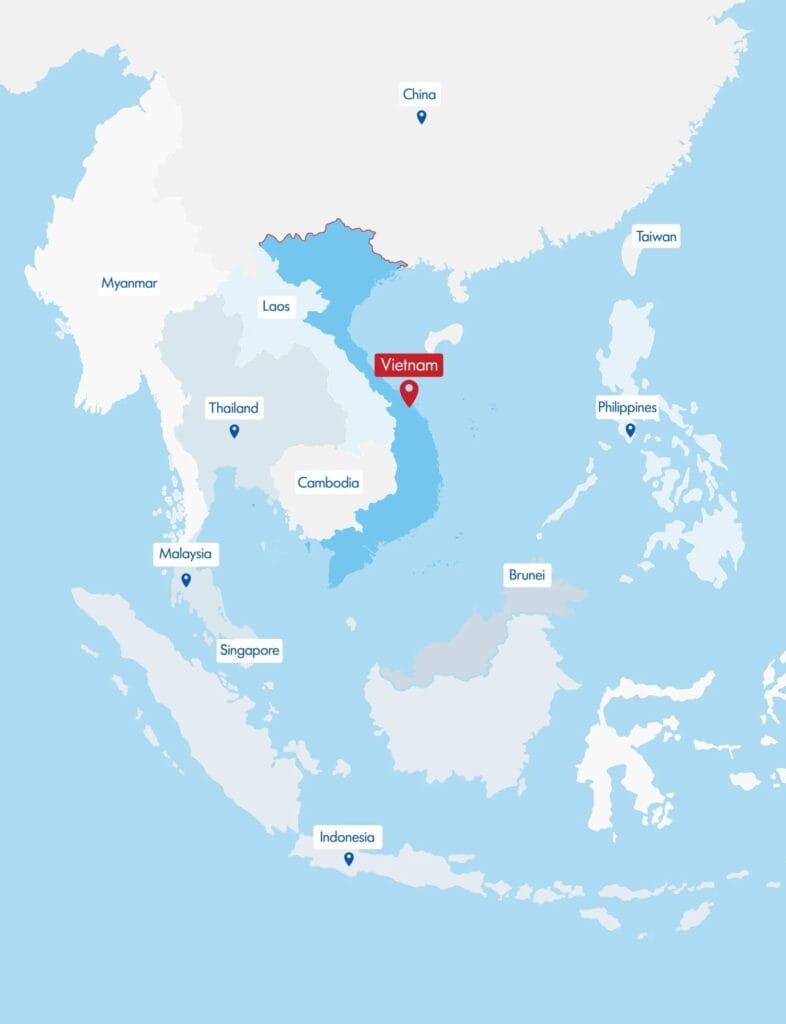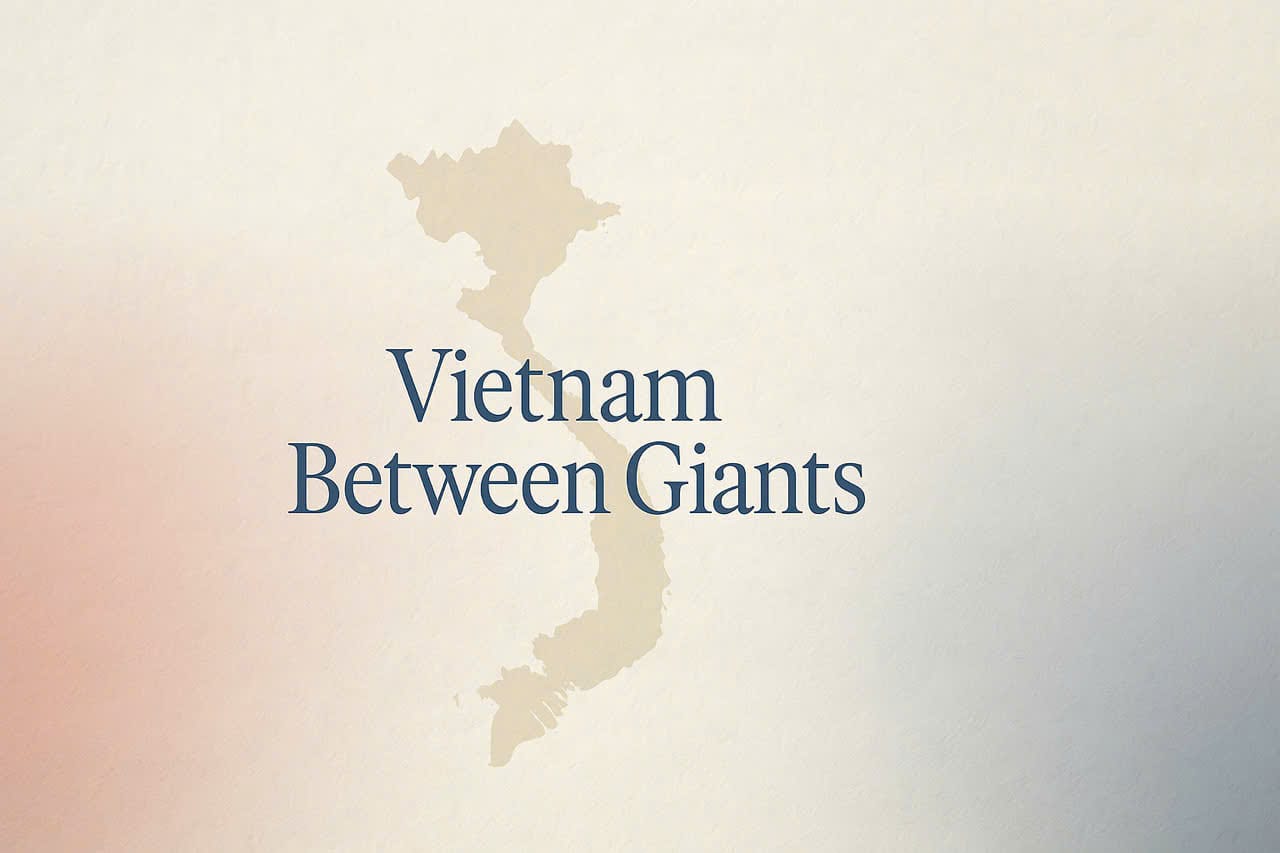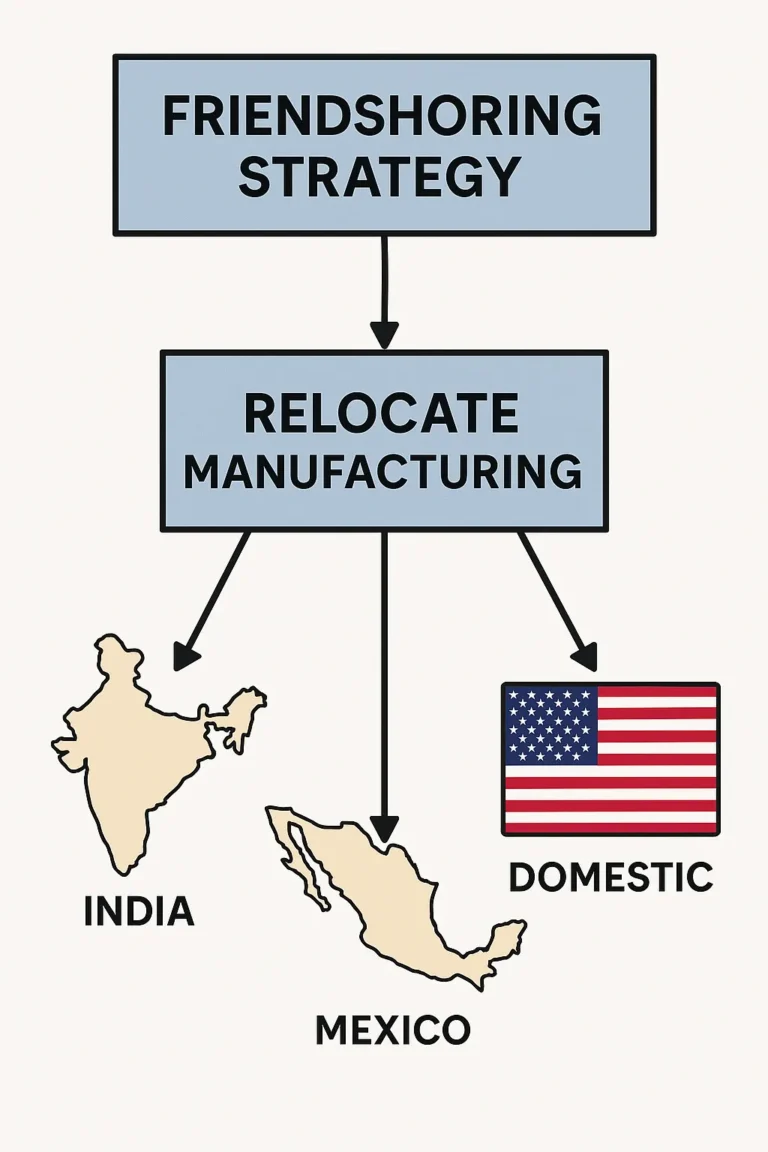Vietnam Between Giants: Welcoming Xi Jinping Amid U.S.-China Rivalry
This morning, President Xi Jinping arrived in Hanoi for a two-day state visit—an event rich in symbolism and strategic meaning. Less than a year has passed since President Biden’s historic visit, during which the U.S. and Vietnam elevated their relationship to a Comprehensive Strategic Partnership. Now, Hanoi finds itself once again at the center of geopolitical gravity.

The question hanging in the air:
Is Vietnam playing both sides, or is it simply playing smart?
Bamboo Diplomacy: Between Flexibility and Firmness
Vietnam’s foreign policy has long been defined by quiet realism. Unlike many nations swept up in ideological currents or alliance systems, Vietnam holds to a set of pragmatic principles: no military alliances, no siding with one power against another, no foreign bases, and no use of force in international relations. This doctrine, often referred to as “bamboo diplomacy”, draws from a deep cultural metaphor: the bamboo bends with the wind, but it does not break.
Hosting Xi so soon after Biden isn’t indecision—it’s intentional ambiguity. For Vietnam, foreign policy is not about loyalty, but about sovereignty.
Why China Still Matters—Deeply
While the U.S. may be the new strategic partner in tech, defense, and investment, China remains the neighbor you cannot move away from.
Vietnam and China share a long land border, historical complexities, and deep economic ties. In 2024, China was Vietnam’s largest trading partner and a growing investor in infrastructure, manufacturing, and green energy. Yet, it is also the country with which Vietnam has had the most serious maritime disputes—especially in the South China Sea.
Xi’s visit is not just about bilateral ties. It’s about reasserting China’s presence in Vietnam’s strategic calculus at a time when Hanoi is cautiously expanding ties westward.
A Visit of Timing and Signaling
Why now? For both countries, the optics are clear.
- For China, it is a counter-signal to the U.S. tilt—a reminder that proximity matters, and that ideological affinities (socialism, one-party governance) still carry weight.
- For Vietnam, it is a reaffirmation of independence—an elegant message that no one country holds its loyalty, but all are welcome at the table of national interest.
The meeting is likely to produce declarations of economic cooperation, infrastructure agreements, and perhaps vague affirmations about peace in the region. But the deeper message lies between the lines: Vietnam will not be cornered. Not by Beijing. Not by Washington.
Walking the Razor’s Edge
In a world increasingly polarized by U.S.-China rivalry, Vietnam’s strategic model offers a rare example of non-alignment with agency. This isn’t Cold War-era neutrality. It’s a dynamic, multi-vector policy that seeks security through diversification.
Vietnam understands the risks:
- Lean too far toward the U.S., and it risks economic retaliation or maritime escalation from China.
- Lean too close to China, and it risks alienating allies, capital, and credibility in the democratic world.
What remains is the razor’s edge: a balancing act that requires not just subtle diplomacy, but national consensus and long-term vision.

Looking Ahead: What Comes After Xi’s Visit?
Several scenarios may follow:
- Subtle Tilt Toward the U.S. Vietnam continues deepening tech cooperation with the West—especially in semiconductors, AI, and critical supply chains—while maintaining formal friendliness with China.
- Chinese Pressure Intensifies. Beijing may escalate activity in the South China Sea or tighten economic conditions to test Hanoi’s resolve.
- A Stronger ASEAN Role. Vietnam doubles down on regional diplomacy to dilute bilateral pressures—positioning itself as a consensus-builder within ASEAN.
Conclusion: The Quiet Game of Sovereignty
Vietnam’s foreign policy isn’t flashy. But it is strategically elegant. Hosting both Xi and Biden within a year is not indecisiveness—it’s a masterclass in sovereign positioning.
In a world that demands countries pick a side, Vietnam continues to choose itself.
[Series Preview: What’s Next for VietFuturus Readers]
Stay tuned for these follow-up pieces in the Vietnam Between Giants series:
“What Did Xi Really Want in Hanoi? Vietnam’s Gains and Risks After the Visit”
“Three Roads Ahead: Vietnam’s Strategic Options After Hosting Xi and Biden”
“Decoding Bamboo Diplomacy: Vietnam’s Foreign Policy in 5 Principles”
Want to support more strategic analysis like this?
Buy me a coffee at ko-fi.com/vietfuturus
Or join our Telegram channel for real-time reflections: t.me/vninsight








